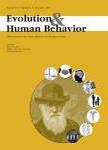版权所有:内蒙古大学图书馆 技术提供:维普资讯• 智图
内蒙古自治区呼和浩特市赛罕区大学西街235号 邮编: 010021

作者机构:Swansea Univ Swansea W Glam Wales Univ Copenhagen Copenhagen Denmark Univ Strathclyde Glasgow Lanark Scotland
出 版 物:《EVOLUTION AND HUMAN BEHAVIOR》 (进化与人类行为)
年 卷 期:2021年第42卷第3期
页 面:186-193页
核心收录:
学科分类:0402[教育学-心理学(可授教育学、理学学位)] 0710[理学-生物学] 1004[医学-公共卫生与预防医学(可授医学、理学学位)] 07[理学] 09[农学]
主 题:Face processing Computer graphics Sexual dimorphism Person perception
摘 要:Research on social judgments of faces often investigates relationships between measures of face shape taken from images (facial metrics), and either perceptual ratings of the faces on various traits (e.g., attractiveness) or characteristics of the photographed individual (e.g., their health). A barrier to carrying out this research using large numbers of face images is the time it takes to manually position the landmarks from which these facial metrics are derived. Although research in face recognition has led to the development of algorithms that can automatically position landmarks on face images, the utility of such methods for deriving facial metrics commonly used in research on social judgments of faces has not yet been established. Thus, across two studies, we investigated the correlations between four facial metrics commonly used in social perception research (sexual dimorphism, distinctiveness, bilateral asymmetry, and facial width to height ratio) when measured from manually and automatically placed landmarks. In the first study, in two independent sets of open access face images, we found that facial metrics derived from manually and automatically placed landmarks were typically highly correlated, in both raw and Procrustes-fitted representations. In study two, we investigated the potential for automatic landmark placement to differ between White and East Asian faces. We found that two metrics, facial width to height ratio and sexual dimorphism, were better approximated by automatic landmarks in East Asian faces. However, this difference was small, and easily corrected with outlier detection. These data validate the use of automatically placed landmarks for calculating facial metrics to use in research on social judgments of faces, but we urge caution in their use. We also provide a tutorial for the automatic placement of landmarks on face images.